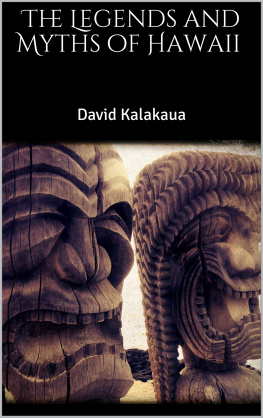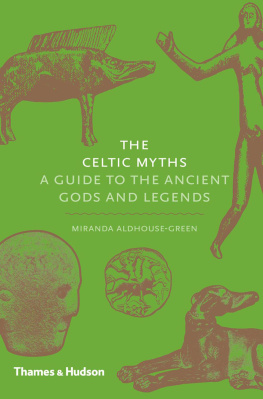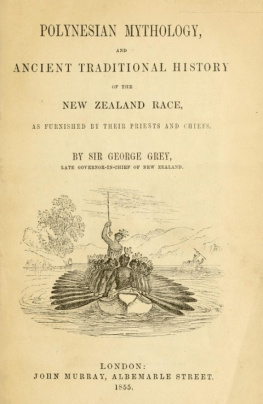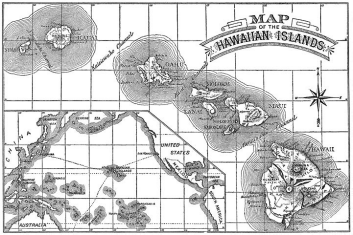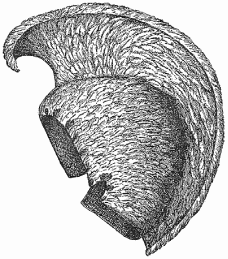PhysicalCharacteristics of the Hawaiian IslandsHistoric OutlinesTheTabuAncient ReligionAncient GovernmentAncient Arts, Habitsand CustomsThe Hawaii of To-day.
GENERALRETROSPECT.
Thelegends following are of a group of sunny islands lying almostmidwaybetween Asia and Americaa cluster of volcanic craters andcoral-reefs, where the mountains are mantled in perpetual green andlook down upon valleys of eternal spring; where for two-thirds oftheyear the trade-winds, sweeping down from the northwest coast ofAmerica and softened in their passage southward, dally with thestately cocoas and spreading palms, and mingle their cooling breathwith the ever-living fragrance of fruit and blossom. Deeplyembosomedin the silent wastes of the broad Pacific, with no habitable landnearer than two thousand miles, these islands greet the eye of theapproaching mariner like a shadowy paradise, suddenly lifted fromtheblue depths by the malicious spirits of the world of waters, eitherto lure him to his destruction or disappear as he drops his anchorbythe enchanted shore.
Mahiole,or Feathered War-Helmet.
Thelegends are of a little archipelago which was unknown to thecivilized world until the closing years of the last century, and ofapeople who for many centuries exchanged no word or product with therest of mankind; who had lost all knowledge, save the littleretainedby the dreamiest of legends, of the great world beyond their islandhome; whose origin may be traced to the ancient Cushites of Arabia,and whose legends repeat the story of the Jewish genesis; whodeveloped and passed through an age of chivalry somewhat morebarbarous, perhaps, but scarcely less affluent in deeds ofenterpriseand valor than that which characterized the contemporaneous racesofthe continental world; whose chiefs and priests claimed kinshipwiththe gods, and step by step told back their lineage not only to himwho rode the floods, but to the sinning pair whose re-entrance totheforfeited joys of Paradise was prevented by the large, white birdof
Kane ;who fought without shields and went to their death without fear;whose implements of war and industry were of wood, stone and bone,yet who erected great temples to their gods, and constructed bargesand canoes which they navigated by the stars; who peopled theelements with spirits, reverenced the priesthood, bowed to therevelations of their prophets, and submitted without complaint totheoppressions of the
tabu ;who observed the rite of circumcision, built places of refuge afterthe manner of the ancient Israelites, and held sacred the religiouslegends of the priests and chronological
meles of the chiefs.
Asthe mind reverts to the past of the Hawaiian group, and dwells foramoment upon the shadowy history of its people, mighty forms riseanddisappearmen of the stature of eight or nine feet, crowned withhelmets of feathers and bearing spears thirty feet in length. Suchmen were Kiha, and Liloa, and Umi, and Lono, all kings of Hawaiiduring the fifteenth and sixteenth centuries; and little less inbulkand none the less in valor was the great Kamehameha, who conqueredand consolidated the several islands under one government, and diedas late as 1819. And beside Umi, whose life was a romance, standshishumble friend Maukaleoleo, who, with his feet upon the ground,couldreach the cocoanuts of standing trees; and back of him in the pastisseen Kana, the son of Hina, whose height was measured bypaces.
GROUPOF ANCIENT WEAPONS.
War-Club.
Pahoa,or Wooden Dagger.
Sharks-TeethKnife.
Flint-edgedKnife.
StoneBattle-Axe.
StoneBattle-Axe.
Ihe,or Javelin, 6 to 8 feet long.
Spear,16 to 20 feet long.
And,glancing still farther backward through the centuries, we beholdadventurous chiefs, in barges and double canoes a hundred feet inlength, making the journey between the Hawaiian and more southerngroups, guided only by the sun and stars. Later we see battles,withdusky thousands in line. The warriors are naked to the loins, andarearmed with spears, slings, clubs, battle-axes, javelins and knivesofwood or ivory. They have neither bows nor shields. They eithercatchwith their hands or ward with their own the weapons that arethrown.Their chiefs, towering above them in stature, have thrown off theirgaudy feather cloaks and helmets, and, with spear and stonehalberd,are at the front of battle. The opposing forces are so disposed astopresent a right and left wing and centre, the king or principalchiefcommanding the latter in person. In the rear of each hostile linearea large number of women with calabashes of food and water withwhichto refresh their battling fathers, husbands and brothers. While thebattle rages their wails, cries and prayers are incessant, and whendefeat menaces their friends they here and there take part in thecombat. The augurs have been consulted, sacrifices and promises tothe gods have been made, and, as the warring lines approach, thewar-gods of the opposing chiefs, newly decorated and attended bylong-haired priests, are borne to the front. War-cries and shoutsofdefiance follow. The priests retire, and the slingers open thebattle. Spears are thrown, and soon the struggle is hand-to-handallover the field. They fight in groups and squads around their chiefsand leaders, who range the field in search of enemies worthy oftheirweapons. No quarter is given or expected. The first prisoners takenare reserved as offerings to the gods, and are regarded as the mostprecious of sacrifices. Finally the leading chief of one of theopposing armies falls. A desperate struggle over his body ensues,andhis dispirited followers begin to give ground and are soon inretreat. Some escape to a stronghold in the neighboring mountains,and a few, perhaps, to a temple of refuge; but the most of them areovertaken and slain. The prisoners who are spared become the slavesof their captors, and the victory is celebrated with feasting andbountiful sacrifices to the gods.

